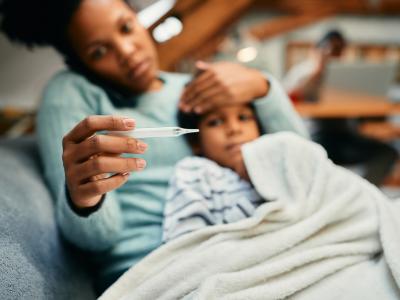Jan 14, 2004 (CIDRAP News) – One of the worst fears of infectious disease experts is that the H5N1 avian influenza virus now circulating in parts of Asia will combine with a human-adapted flu virus to create a deadly new flu virus that could spread around the world.
That could happen, scientists predict, if someone who is already infected with an ordinary flu virus contracts the avian virus at the same time. The avian virus has already caused at least 48 confirmed human illness cases in Asia, of which 35 have been fatal. The virus has shown little ability to spread from person to person, but the fear is that a hybrid could combine the killing power of the avian virus with the transmissibility of human flu viruses.
Now, rather than waiting to see if nature spawns such a hybrid, US scientists are planning to try to breed one themselves—in the name of preparedness.
The Centers for Disease Control and Prevention (CDC) will soon launch experiments designed to combine the H5N1 virus and human flu viruses and then see how the resulting hybrids affect animals. The goal is to assess the chances that such a "reassortant" virus will emerge and how dangerous it might be.
CDC officials confirmed the plans for the research as described recently in media reports, particularly in a Canadian Press (CP) story.
Two ways to make hybrids
The plans call for trying two methods to create hybrid viruses, CDC spokesman David Daigle told CIDRAP News via e-mail. One is to infect cells in a laboratory tissue culture with H5N1 and human flu viruses at the same time and then watch to see if they mix. For the human virus, investigators will use A (H3N2), the strain that has caused most human flu cases in recent years, according to the CP report.
The other method is reverse genetics—assembling a new virus with sets of genes from the H5N1 and H3N2 viruses. Reverse genetics has already been used to create H5N1 candidate vaccines in several laboratories, according to Daigle. The National Institutes of Health (NIH) said recently it would soon launch a clinical trial of one of those vaccines.
Of the two methods, the co-infection approach was described as slower and more laborious, though closer to what happens in nature.
Any viable viruses that emerge from these processes will be seeded into animals that are considered good models for testing how flu viruses behave in humans, according to Daigle. The aim will be to observe whether the animals get sick and whether infected animals can infect others.
The World Health Organization (WHO) has been "pleading" for laboratories to do this research, because it could provide some evidence to back up the agency's warnings about the risk of a flu pandemic, according to the CP report.
Klaus Stohr, head of the WHO's global influenza program, was quoted as saying that if none of the hybrids caused disease, the agency might be inclined to dial down its level of concern. But if the experiments produce highly transmissible and pathogenic viruses, the agency will be more worried, he said.
Safety precautions
Because of the obvious risks in creating viruses with the potential to spark a pandemic, the work will be done in a biosafety level 3 (BSL-3) laboratory at the CDC in Atlanta, Daigle told CIDRAP News.
"We recognize that there is concern by some over this type of work. This concern may be heightened by reports of recent lab exposures in other lab facilities," he said. "But CDC has an incredible record in lab safety and is taking very strict precautions."
Daigle said the US Department of Agriculture requires that highly pathogenic avian influenza (HPAI) viruses be treated as "Select Agents" and that research on them must be done in BSL-3 labs with "enhancements." These include "special provisions to protect both laboratory workers and the environment."
BSL-3 is the second highest level of laboratory biosecurity. It is used for work with pathogens that may cause serious or potentially lethal disease if inhaled, such as tuberculosis or St. Louis encephalitis, according to the CDC.
CDC experiments with HPAI viruses have to pass reviews by the agency's Institutional Biosafety Committee and Animal Care and Use Committee, Daigle said. The facilities involved are inspected by the USDA and the CDC's Office of Safety and Health, and staff members who work with Select Agents require special clearance.
It's been done before
The upcoming experiments will not break entirely new ground for the CDC, the CP story revealed. The agency already has made hybrid viruses with H5N1 samples isolated from patients in Hong Kong in 1997, when the virus first caused human disease.
The results of that research have not yet been published, and the CDC has said little about them. In the CP report, Dr. Nancy Cox, head of the CDC's influenza branch, commented only, "Some gene combinations could be produced and others could not."
Daigle added little to that. He said, "The reassortment work with the 1997 isolate was intermittently interrupted with SARS [severe acute respiratory syndrome] and then the 2004 H5N1 outbreak. We are currently concentrating our efforts on understanding the pathogenicity of the 2004 strains (non-reassortants) in mammalian models."
He said the CDC hopes to prepare a report on that research "in the near future."
See also:
CDC information on biosafety levels
http://www.cdc.gov/od/ohs/symp5/jyrtext.htm




















